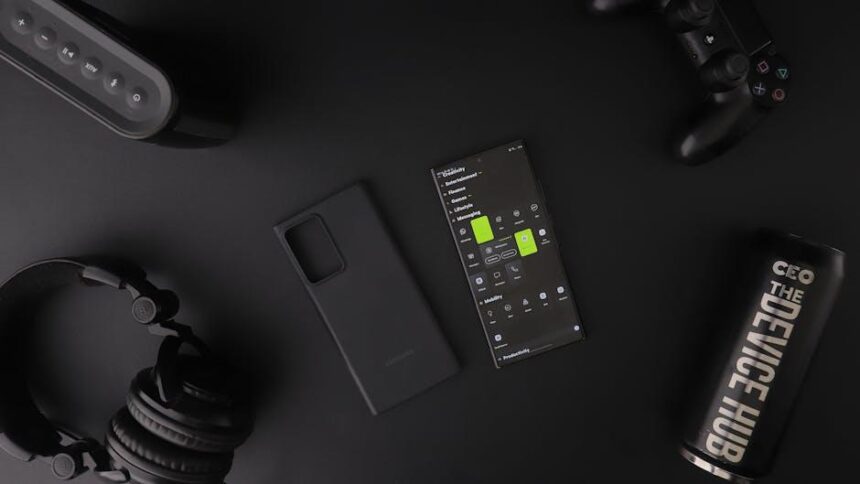In the rapidly evolving landscape of mobile technology, artificial intelligence has become the invisible engine powering smarter apps, seamless user experiences, and innovative services. But beneath the surface of this digital renaissance lies a pivotal debate: Should AI computations be handled on the edge-right on our devices-or be offloaded to the expansive, remote clouds? Edge AI and cloud AI each bring distinct strengths and challenges to the table, shaping the future of mobility in unique ways. This article explores the nuanced dance between these two paradigms, unpacking how they influence performance, privacy, and connectivity in the devices we rely on every day.
Edge AI Performance and Latency Advantages in Mobile Devices

When AI computations happen directly on mobile devices, users experience a remarkable boost in responsiveness. Without the need to send data back and forth to a remote server, tasks like image recognition, natural language processing, and predictive typing execute almost instantaneously. This proximity of processing power cuts down latency from hundreds of milliseconds to mere milliseconds, making interactions feel frictionless and natural. Moreover, by processing data locally, devices significantly reduce reliance on unstable or slow network connections, enhancing both reliability and user satisfaction.
The efficiency gains extend beyond just speed. Running AI models on the edge allows for optimized power consumption and improved privacy controls, since sensitive data can remain confined to the device. Here’s a quick comparison between edge AI and cloud AI performance in mobile devices:
| Feature | Edge AI | Cloud AI |
|---|---|---|
| Latency | 1-10 ms | 100-300 ms |
| Data Dependency | None (offline operation) | High (requires internet) |
| Battery Impact | Optimized | Variable (depends on connectivity) |
| User Privacy | Enhanced (local data storage) | Lower (data transmitted externally) |
- Real-time responses enable smoother AR and voice assistants.
- Offline functionality keeps features accessible anywhere.
- Efficient battery use prolongs device usage between charges.
Balancing Privacy and Security in Edge AI versus Cloud AI

When it comes to protecting user data on mobile devices, Edge AI offers a compelling advantage by processing information locally. This approach naturally minimizes the risk of sensitive data exposure, since information doesn’t traverse external servers. On the flip side, local processing means security relies heavily on the device itself, requiring robust hardware encryption and secure boot processes to prevent breaches. Edge AI’s decentralized nature empowers users with direct control over their data, but also demands vigilant protection against physical device theft or malware attacks.
In contrast, Cloud AI centralizes data in fortified data centers outfitted with cutting-edge security protocols and continuous monitoring. This infrastructure allows for advanced threat detection and rapid incident responses, but sends personal data over networks susceptible to interception or breaches. Companies must implement strong end-to-end encryption and strict access controls to safeguard user privacy. To clearly compare, consider this simplified overview:
| Aspect | Edge AI | Cloud AI |
|---|---|---|
| Data Location | Local device | Remote servers |
| Privacy Control | User-centric | Provider-centric |
| Security Risks | Device theft, malware | Network interception, hacks |
| Encryption | Hardware-based | End-to-end |
Ultimately, successful mobile AI solutions strike a nuanced balance by incorporating hybrid models or layered defenses such as local pre-processing before securely transmitting select data to the cloud. This strategy enhances privacy without compromising the vast computational power and scalability that cloud AI provides.
Energy Efficiency and Battery Life Considerations for Mobile AI

Mobile AI systems face significant challenges when it comes to balancing computational power with battery consumption. Edge AI models must operate efficiently within the limited energy budget of smartphones and wearables, demanding innovations in low-power chip design and optimized algorithms. Techniques such as model quantization, pruning, and adaptive inference help reduce the processing load, prolonging battery life without compromising performance. Additionally, smart energy management strategies dynamically adjust AI operations based on the device’s current power state, ensuring prolonged usability during critical tasks.
In contrast, cloud AI offloads heavy computation to remote servers, alleviating on-device energy strain but requiring continuous data transmission that can also drain battery and reduce reliability in low connectivity scenarios. Here’s a simple comparison of the two approaches:
| Aspect | Edge AI | Cloud AI |
|---|---|---|
| Battery Impact | Moderate; optimized local compute | Variable; network usage affects battery |
| Latency | Low; real-time on-device processing | Higher; dependent on network speed |
| Energy Efficiency Techniques |
|
|
Choosing the Right AI Approach for Your Mobile Application Needs

When deciding between edge AI and cloud AI for your mobile app, consider not only the technological capabilities but also the unique needs of your end-users. Edge AI brings the power of real-time processing directly to the device, making it ideal for applications requiring instant response and offline functionality. This approach enhances privacy and reduces latency by handling sensitive operations locally. On the other hand, cloud AI offers vast computational resources and continuous learning capabilities, perfect for apps needing complex data analysis or leveraging extensive datasets for improved accuracy. Evaluating factors like data sensitivity, connectivity, and processing power will guide you toward the most effective AI deployment.
Key considerations include:
- Latency: Edge AI excels with immediate data processing, while cloud AI may suffer delay depending on network quality.
- Data Privacy: Sensitive data stays on-device with edge AI, whereas cloud AI requires data transmission to remote servers.
- Scalability: Cloud AI scales effortlessly for complex models, but edge AI depends on device hardware limits.
- Connectivity: Edge AI thrives offline; cloud AI demands reliable internet access.
Here’s a quick comparison to clarify your choice:
| Aspect | Edge AI | Cloud AI |
|---|---|---|
| Processing Location | On device | Remote servers |
| Network Dependency | Low | High |
| Data Privacy | High | Variable |
| Latency | Minimal | Variable |
| Model Updates | Periodic manual or OTA updates | Continuous and automatic |
In Conclusion
As the dance between Edge AI and cloud AI continues to unfold in the realm of mobile technology, it becomes clear that neither is a soloist but part of a complex symphony. Edge AI brings immediacy and privacy to the forefront, while cloud AI offers immense power and expansive learning. Ultimately, the future of mobile innovation may not hinge on choosing one over the other but on harmonizing their strengths-crafting experiences that are both smart and seamless, right at our fingertips. The question isn’t which will dominate, but how they will together reshape the way we connect with the world.














